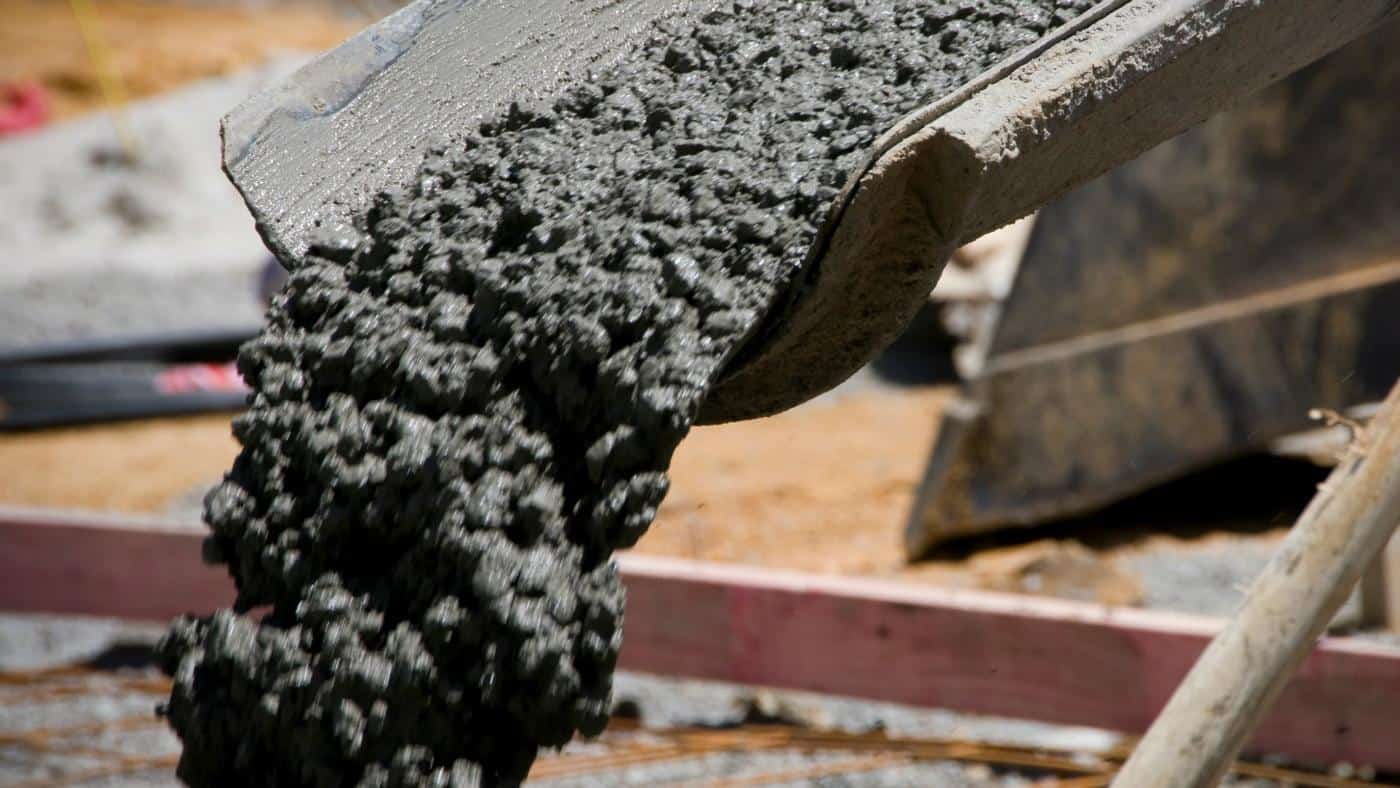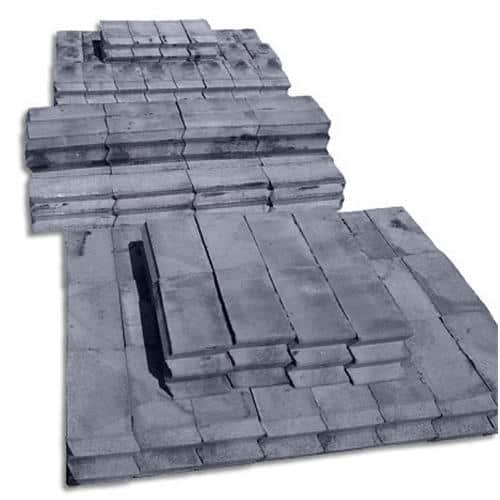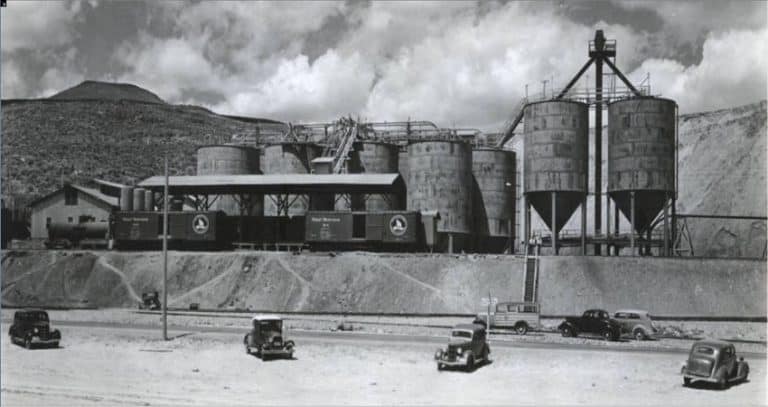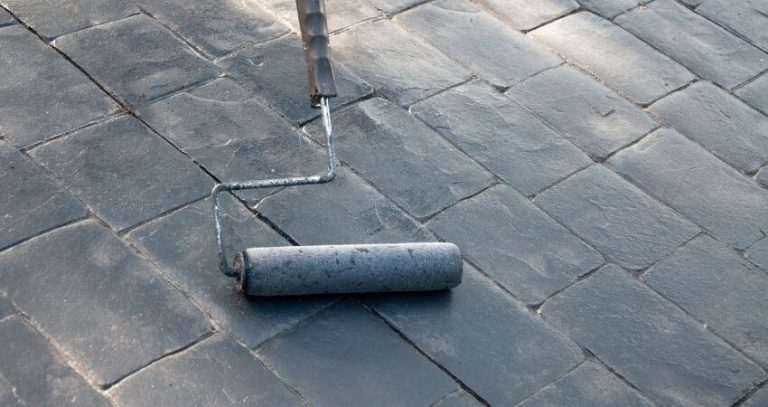How Much Does Concrete Weigh? (With 10 specific examples)

Concrete is a mixture of cement, water, aggregates and sometimes slag or flies ash-type additional materials. You can use concrete to create an essential part of the construction sites. It’s one of the most universal building materials around the world.
The weight of the concrete is determined by its density depending on the concrete mixture. It increases or decreases a little and depends on the cement, water, aggregate and air used to create the mixture.
In this article, we’ll discuss all about how much does concrete weighs. We will also talk about the biggest concrete structure in the world.
Determine The Density Of Concrete:
As we mentioned before, concrete is a mixture of different types of materials. Such as cement, water, aggregates, and sometimes slag or fly ash like materials.
The weight of components depends on various factors. For example, the density and amount of the aggregate, the amount of entrapped air, and the cement and water content. The density is the measure of concrete component weight.

The density of concrete is determined by mass and volume as shown in the below formula:
Density (p) = mass (m) ÷ Volume (V)
A typical density of concrete is 3.15 g/cm3 where the density of aggregate will differ by the type of stone used. For example, gravel has a higher density than vermiculite. The density of a common concrete mix is (2.4 g/cm3 or )150 lbs/ft3.
The best concrete mix for a countertop has less aggregate when compared with the mix for a driveway. These will affect the density and then the weight of the concrete.
Density of Concrete
| Volume | Weight |
|---|---|
| 1 in3 | 1.39 oz |
| 1 ft3 | 150 lb |
| 1 yd3 | 4050 lb |
| 1 m3 | 2400 kg |
How Much Does Concrete Weigh?
The weight of concrete is measured by its density, which can differ from the amount of aggregate, air and water in the mix. Concrete is made of these materials, so the weight variation occurs when there is any variation in ingredients. However, this weight can differ from different types of concrete, but they are not far from each other.
There is a straightforward answer to this common question. On average, regular concrete mix weighs 150 pounds per cubic foot, 4,050 pounds per cubic yard, or 2,400 kg per cubic meter.
Wet Vs Dry Concrete: How Much The Weight Difference?
Concrete is a mixture of cement, aggregates, sand and, eventually, water. The water makes a specific chemical reaction with all of the items together. Water is important to create the concrete, which takes a part of the included weight.
But, always remember that your finishing result is almost similar to the given amount. It’s going to be because of the evaporation of the water.

As a result, both wet and dry concrete have individual weights, but they are not much different. The amount of concrete you get is not going to change much more.
Weight Variation?
Different types of concrete have different weights. It can be cement, gravel, Portland, reinforced, and lightweight. Lightweight concrete is usually made of pumice types of light density material.
The regular weight of lightweight concrete is 1920 kg per cubic meter or 116 pounds per cubic foot (3132 pounds per cubic yard) on average. Always remember that the price of the lightweight concrete is double than the regular concrete but it’s weaker than regular concrete. This is because of the higher water content present in the lightweight concrete.
Factors In The Weight Of Concrete
Concrete is a man-made multicomponent complex material. All of the components contribute to the overall weight of concrete. That means concrete has a different range of weights. Some concrete is dense where the others are light. Many one of them is mixed with heavy aggregates, and the other is mixed with fine sand. These factors will affect how much concrete weighs. Again, most of the weight comes from the cement and aggregates.
10 Specific Examples of Concrete
If you have less interest in the math behind the weight of concrete but more interest in specific examples this section is for you. We think it will be interesting to know exactly how much concrete megastructures weigh. So we made a list of ten specific examples of how much concrete weighs.
- Three Gorges Dam (China)
Heaviest Concrete Structure
Once upon a time, the Grand Coulee Dam was the largest concrete structure in the world. But today, this title goes to the Three Gorges Dam. Believe it or not, it’s about three times the size of Grand Coulee dam. Three Gorges dam is located in the Yangtse River in China. It’s the world’s largest concrete dam containing 27.2×106 m3 of concrete! The 144,309,356,753.51 pounds of weight holds the title, “heaviest concrete structure”.
- Burj Khalifa, Dubai
Tallest Concrete Structure
At present, the Burj Khalifa is the tallest building in the world. It stands at 828 m tall in Dubai, United Arab Emirates. It’s not only the tallest skyscraper in the world but also recognized as the world’s tallest man-made building. Around 45,000 cubic meters of concrete was used for the foundation of the tower. As well as additional 330,000 cubic meters used for the construction. As a result, the weight goes to 238,747,095.768 pounds.
- Grande Dixence Dam
Tallest Concrete Dam
Grande Dixence Dam is one of the biggest concrete structures located in Switzerland. It’s the world’s tallest dam currently standing at 285 meters (935 feet) high and 2,280 feet wide. This massive dam weighs a huge 31,832,946,341.227 pounds. The material was sincerely selected as a gravity dam. Since it depends on the weight and strength of the concrete to hold the pressure of a billion cubic meters of water.
- Statue of Unity (India)
World’s Tallest Statue
At 182 metres the Statue of Unity currently is the tallest in the world. This Statue of Unity is located in Gujarat in India. It’s 54 metres taller than the earlier record holder, the Spring Temple Buddha in China. Statistically, it’s almost 4 times taller than the well-known Statue of Liberty in New York.
The largest scale of the project is reflected in the huge size and weight of its materials. Its structural system consists of two reinforced concrete cores with a reinforced concrete podium. The structure took concrete of 2,500,000 cubic feet with 5,700 tons steel and 18,500 tons of reinforced steel rods.
- Millau Viaduct, France
World’s Tallest Bridge
The Millau Viaduct is a cable-stayed multi-span bridge unique of its kind. It crosses across the gorge valley of the River Tarn in Southern France. It’s one of the most incredible civil engineering feats of modern time.
Millau Viaduct recognised the tallest bridge in the world, retaining a structural height of 336.4 metres (1,104 ft). This bridge is 19m higher than the Eiffel tower and five times of its weight. Besides the height, the 2,460m long roadway weighs 36,000 tons. Apart from its sizes, the amounts of materials used are also huge, as an example is 85,000m3 of concrete. The bridge has ranked as one of the greatest engineering successes of modern times. It received several structural awards for bridge engineering as well.
- Oroville Dam, USA
Tallest Dam in U.S
Oroville Dam is designed to control the Lake Oroville reservoir, providing hydroelectric power with minimizing flood damage. At 770 feet (235 m) high, it is the current tallest dam in the United States.
The ultimate 155 million tons of construction material took over 40,000 train trips to transport. The service spillway has 3,000 feet over long and 179 feet wide concrete chute, dropping below 500 feet to the river. The dam has two spillways on its right abutment to deliver water past the dam. It’s controlled by several steel radial gates at its headworks structure.
- Petronas Twin Towers, Malaysia
Identical Concrete Towers
Petronas Twin Towers are twin buildings in Kuala Lumpur, Malaysia. It’s an excellent example of F.R. Khan’s invented tube in tube design. This 1,483 feet tower held the world’s tallest building title when it was built in 1998. Once these two identical towers were the tallest skyscrapers in the world.
The tower designed to reflection of Islamic art of Malaysia’s Muslim religion. It was mainly constructed with reinforced concrete with steel and glass.
Around 144,309,356,753.51 pounds of concrete needed to build these towers. Most of this heavyweight can be placed to it’s 120-foot deep concrete foundation.
- Gotthard Base Tunnel, Switzerland
Longest Concrete Tunnel
The Gotthard Base Tunnel is the longest concrete railway tunnel through the Alps in Switzerland. It’s 57.09 km route is the longest railway tunnel in the world. This tunnel is a part of the longest environmental protection projects in Europe. LafargeHolcim provided 1.3 million m3 of concrete for several sections of the tunnel.
In the last few months, freight trains passed the tunnel on average 1080 tonnes in weight. However, the maximum weight capacity will increase from 1600 to 2000 tonnes.
- Polavaram Dam Project, India
Largest Concrete Pour
Navayuga Engineering Company Limited accomplished the project at Polavaram Dam Project in Andhra Pradesh, India. The is the largest continuous pour of 32,315.5 m³ (1,141,211.1 ft³). This record project took place at the dam site of Polavaram. Once finished, the dam will be the source of 20 million people’s water supply. The attempts to provide irrigation and electricity to the area.
- Colosseum, Rome, Italy
Romans Concrete Structure
The last structure we’ll be peeking at is the famous ancient Romans concrete structure. The oval amphitheatre Colosseum is the largest ancient amphitheatre ever built and remains despite its age. It’s located in Rome, Italy, is one of the world’s most famous ancient Roman structures.
Romans Colosseum is one of the earliest buildings, though it is two thousand years old. That time roman was invented concrete and it was their best building technology. So, the Colosseum was made with concrete and weighs a rough 24 tons (48,000 pounds).
This seems incorrect, but the wood brick was the primary frame of the Colosseum. So, the total weight wasn’t calculated for the solid concrete.
Conclusion
Concrete is a mixture of cement, water, aggregates and sometimes slag or fly ash like materials. The weight of the concrete is determined by its density which depends on all of these materials. On average, regular concrete mix weighs 150 pounds per cubic foot, 4,050 pounds per cubic yard, or 2,400 kg per cubic meter. This weight can differ from different types of concrete, but they are not far from each other.

I’m a concrete contractor by trade and have been working in the industry for over 25 years now. I’ve seen (and done) it all when it comes to concrete, and I love sharing my knowledge and experiences with others who are interested in learning more about this amazing material. In my spare time, I enjoy spending time with my family, fishing, and watching NASCAR races.






